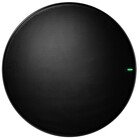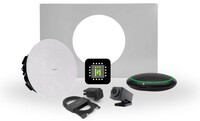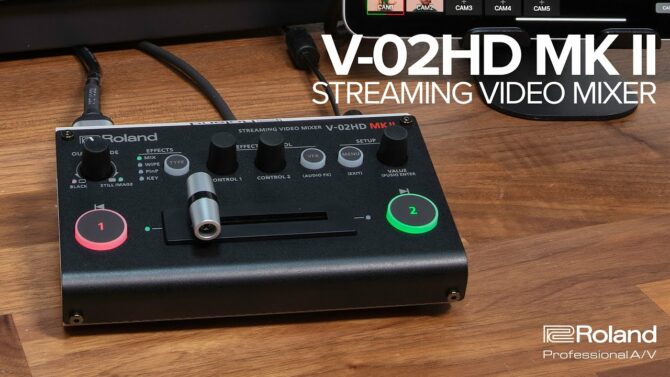By Chris Lyons, Shure
A meeting without video is still a meeting; a meeting without audio is cancelled. In fact, 81% of IT Decision Makers say audio has the biggest impact on improving the quality of virtual meetings. Good sound is easy to overlook, but poor sound cannot be missed. It causes fatigue, increases distraction, and reduces comprehension – all of which reduce productivity and revenue.
In this series of blog posts, we’ll examine how the various parts of the audio ecosystem affect sound quality. The job of the audio system is to capture the voices of people in the room for transmission, and to reproduce the voices of people at the other location. To do this well, the sound needs to be both intelligible (meaning you can understand what’s being said) and natural (meaning that people sound like themselves, as they would if you were speaking face to face.) In blog post #1, we’ll discuss the role of the microphone.
The Microphone Has Only One Job
The conferencing microphone is the very first link in the chain of audio components; it’s the point of origin for everything that happens downstream. The microphone has only one job: to convert sound waves traveling through the air into an audio signal that can flow down a wire to be transmitted, amplified, or recorded. If the microphone feeds a poor-quality audio signal into the network, that’s what comes out on the other side, and the loudspeaker has no choice but to convert it back into sound. If the sound is muffled, hollow, or obscured by noise, a big part of the blame lies with the microphone.
To create an audio signal that is as clean and clear as it can be, the microphone needs to pick up as much of the talkers’ voices and as little of the ambient Definition:
Definition:
1. Something in a close vicinity. 2. The natural sound of a space, or simulation of being in that space. room noise and reverberation as possible. On its way to the microphone, however, the sound of the talker’s voice has to wade through an acoustic swamp consisting of room noise (coming from things like air vents, building vibrations, street sounds, and people) and reverberation (caused by reflections of the voice off of hard surfaces). The farther the voice has to travel, the deeper it sinks into the swamp, until at some point it’s almost completely submerged.
There are only three ways around this. The first way is to eliminate the swamp. If we make the room quiet and non-reflective like a recording studio or a library, there is almost no noise or reverberation for the voice to wade through. But the places where people work or meet aren’t often like that, and it’s usually expensive and difficult to make them that way.
The second way is to capture the voice before it starts to sink into the swamp. This is simple and effective, but it means that the microphone needs to be placed within a few inches of the talker’s mouth, just like for a singer at a concert. But in a day-to-day workplace or college context, of course, the microphone needs to be at least a couple of feet away on the table, and probably farther away than that – perhaps even on the wall or ceiling.
The third way is to use a conferencing microphone that does a much better job of discriminating between speech and noise or reverberation. To pick up clear, intelligible, natural speech from a distance, we need a microphone that can direct virtually all of its hearing sensitivity Definition:
Definition:
In transducers and amplifiers, the how much input energy is needed to produce the desired output. precisely at the talker and very little of it at the surrounding noise and reverberation. The only traditional microphone capable of this kind of performance is the shotgun microphone Definition:
Definition:
A long, cylindrical microphone that uses line interference tube technology to create a very narrow and focused pickup pattern. Typically used to capture sounds at a distance, while blocking out interference from other sound sources., which uses a long tube to make the microphone’s pickup pattern narrower. These are commonplace in a TV studio or on a movie set, but a two-foot tube sticking out of the wall or ceiling doesn’t fit into a typical work environment.
Array Microphones
The most advanced solution is the array microphone. Shure array microphones combine as many as 100 tiny microphones in a low-profile form factor Definition:
Definition:
A device's general physical configuration or size, often taking into account the ratios of various measurements. that can be easily mounted on or below the ceiling, on the wall, or on the table. An array microphone’s pickup pattern can even be adjustable from extremely narrow to wide, to cover a single seat or an entire section of the room.
Best of all, an array microphone can deploy multiple lobes to capture talkers in different areas of the room. Picking up the voice of one person at a podium or the head of a conference table might require a narrow lobe Definition:
Definition:
Areas of sensitivity in a microphone pattern chart.; picking up three or four people on one side of the table might need a medium lobe; and picking up questions from students in a training room might need a couple of wide lobes. The array microphone allows each lobe to be adjusted individually so that overall speech levels are consistent for everyone in the room.
A conferencing microphone is even more versatile when it is combined with built-in digital signal processing that can deliver a finished audio mix that is ready to be transmitted to other sites on a videoconference. In the next installment in this series we’ll cover why DSP Definition:
Definition:
1. (Digital Signal Processor): An integrated circuit or device that mathematically alters sound or video signals. 2. (Digital Signal Processing): The technique of converting an analog signal into digital data, manipulating that data, then producing an analog output that reflects the changes caused by these manipulations done in the digital domain. has become such an important part of the audio ecosystem.
The Right Microphone Supports Every Device in the Audio Ecosystem
By providing a solid audio foundation, the microphone allows every downstream device in the audio ecosystem to do its best to enhance the audio signal. Automatic mixers make better mic activation decisions; automatic gain controls adjust levels more smoothly; echo Definition:
Definition:
A repeat of an audio signal. cancelers eliminate echo more completely. Capturing clear, natural, intelligible speech that is uncontaminated by room noise and reverberation seems simple, but it’s not. But achieving sound quality that supports effortless communication and maximum productivity – without fatigue or distraction – requires microphones that can extract the best raw material while adapting to the room and the people in it.
Read the other articles highlighting the Microflex Ecosystem for AV Conferencing:
- The Microflex Ecosystem, Part 2: Digital Signal Processing
- The Microflex Ecosystem, Part 3: Conferencing Loudspeakers
- The Microflex Ecosystem, Part 4: Conferencing Software
Shure Microflex Advance array microphones combine adjustable pickup lobes, internal DSP, and simple configuration in a variety of ceiling, wall, or table mounting options. For a free consultation, call our trained and certified product experts at 800-356-5844. Learn more at https://www.fullcompass.com/promos/shure-microflex-conferencing-solutions.
Republished with permission from Shure Incorporated.
















